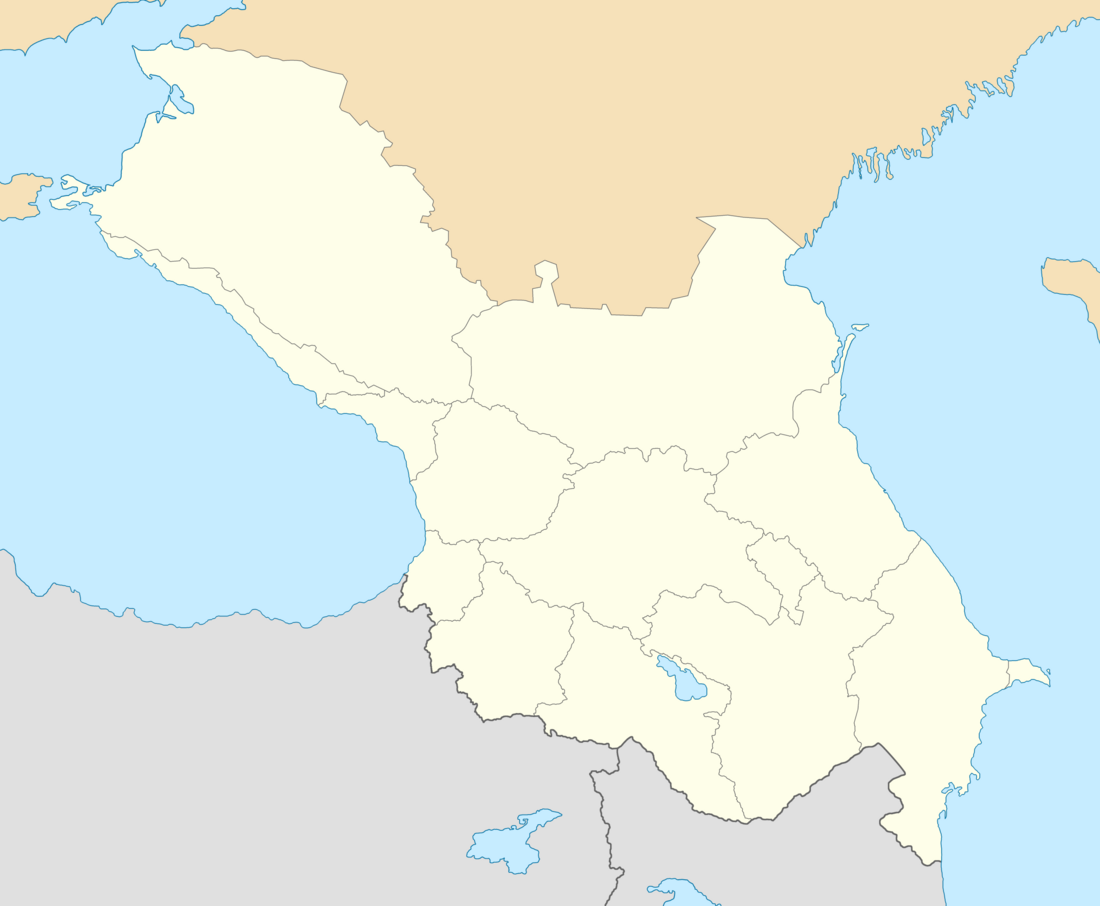Top Qs
Timeline
Chat
Perspective
Caucasus Viceroyalty (1801–1917)
Colony of the Russian Empire From Wikipedia, the free encyclopedia
Remove ads
The Caucasus Viceroyalty[a] was a special administrative unit of the Russian Empire located in the Caucasus region, existing from 1801 to 1917 under the governance of various administrative offices.[b] It included the present-day countries of Armenia, Azerbaijan and Georgia, as well as the Russian republics of Adygea, Chechnya, Dagestan, Ingushetia, Kabardino-Balkaria, Karachay-Cherkessia and North Ossetia–Alania and portions of Southern Russia[c] and Turkey.
Russia conquered the Caucasus in the early 19th century, beginning with the annexation of the Georgian Kingdom of Kartli-Kakheti and continuing with the Caucasian War and a series of conflicts against the Ottoman and Persian empires.
Remove ads
History
Summarize
Perspective
The first time Russian authority was established over the peoples of the Caucasus was after the Russian annexation of the Kingdom of Kartli-Kakheti (eastern Georgia) in 1801. General Karl Knorring was the first person to be assigned to govern the Caucasus territory, being officially titled as the Commander-in-Chief in Georgia and Governor-General of Tiflis (present-day Tbilisi). Under his successors, notably Prince Pavel Tsitsianov, General Aleksey Yermolov, Count Ivan Paskevich, and Prince Mikhail Vorontsov, Russian Transcaucasia expanded to encompass territories acquired in a series of wars with the Ottoman Empire, the Persian Empire, and local North Caucasian peoples. The scope of its jurisdiction eventually came to include what is now Georgia, Armenia, Azerbaijan, and the North Caucasus, as well as parts of Northeastern Turkey (today the provinces of Artvin, Ardahan, Kars, and Iğdır).[1]
Russia utilised a divide and rule strategy in the Caucasus, favouring local Christian groups (or, in the case of the Ossetians, converting them to Christianity) over Muslims. Georgians and Armenians were uniquely recognised as "culturally advanced" due to their Christian faith and often collaborated with colonial administration in the South Caucasus, while Muslim Azerbaijanis were designated as "culturally backward" and did so less frequently.[2] The Ossetians, who adhered to a melange of beliefs including Christian, Islam and pagan traditions prior to Russian colonisation, were conscripted into the Imperial Russian Army, separating them from other ethnic groups in the North Caucasus.[3] The Russian government also used Arabic as the official language of colonial administration in the North Caucasus following the defeat of Imam Shamil's Caucasian Imamate; at the time, Arabic was the lingua franca of the region's Muslim population.[4]
Headquartered at Tiflis, the viceroys acted as de facto ambassadors to neighboring countries, commanders in chief of the armed forces, and the supreme civil authority, mostly responsible only to the Tsar. From 3 February 1845 to 23 January 1882, the viceregal authority was supervised by the Caucasus Committee as the Caucasus Krai, which consisted of representatives of the State Council and the ministries of Finances, State Domains, Justice, and Interior, as well as of members of special committees. After the 1917 February Revolution, which dispossessed Tsar Nicholas II of the Russian crown, the Viceroyalty of the Caucasus was abolished by the Russian Provisional Government on 18 March 1917, and all authority, except in the zone of the active army, was entrusted to the civil administrative body called the Special Transcaucasian Committee or Ozakom (short for Osobyy Zakavkazskiy Komitet, Особый Закавказский Комитет).
Remove ads
Administrative divisions
Summarize
Perspective
Over more than a century of the Russian rule of the Caucasus, the structure of the viceroyalty underwent a number of changes, with the addition or removal of administrative positions and redrawing of provincial divisions.[5] In 1917, there were six guberniyas ("governorates"), five oblasts ("regions"), two special administrative okrugs ("districts"), and a gradonachalstvo ("municipal district") within the Caucasus Viceroyalty:[6][7]
Remove ads
Demographics
Summarize
Perspective

Kavkazskiy kalendar
According to the 1917 publication of Kavkazskiy kalendar, the Caucasus Viceroyalty had a population of 12,266,282 on 14 January [O.S. 1 January] 1916, including 6,442,684 men and 5,823,598 women, 9,728,750 of whom were the permanent population, and 2,537,532 were temporary residents:[7]
Largest cities
Remove ads
High commissioners and viceroys of the Caucasus

- Karl Heinrich von Knorring 1801–1802
- Pavel Tsitsianov 1802–1806
- Ivan Gudovich 1806–1809
- Alexander Tormasov 1809–1811
- Philip Paulucci 1811–1812
- Nikolay Rtishchev 1812–1816
- Aleksey Yermolov 1816–1827
- Ivan Paskevich 1827–1831
- Gregor von Rosen 1831–1838
- Yevgeny Golovin 1838–1842
- Aleksandr Neidgardt 1842–1844
- Mikhail Vorontsov 1844–1854
- Nikolay Muravyov-Karsky 1854–1856
- Aleksandr Baryatinsky 1856–1862
- Grigol Orbeliani (acting) 1862
- Grand Duke Mikhail Nikolayevich 1862–1882
- Aleksandr Dondukov-Korsakov 1882–1890
- Sergei Sheremetyev 1890–1896
- Grigory Golitsyn 1896–1904
- Yakov Malama (acting) 1904
- Illarion Vorontsov-Dashkov 1904–1916
- Grand Duke Nikolay Nikolayevich 1916–1917
Remove ads
Notes
- Power was exercised through the offices of glavnoupravlyayushchiy ("high commissioner") (1801–1844, 1882–1902) and namestnik ("viceroy") (1844–1882, 1904–1917). These two terms are commonly, but imprecisely, translated into English as viceroy, which is frequently used interchangeably with governor general. More accurately, glavnoupravlyayushchiy is referred to as the High Commissioner of the Caucasus, and namestnik as Viceroy.
- The republics of Russia are administrative subdivisions of Russia, but have legal rights not held by other territories due to constitutional asymmetric federalism and are thus listed separately.
- The Baku gradonchalstvo did not exist in 1897.
- The Batum oblast was included in the Kutaisi Governorate in 1897; The population of its territory within the Kutaisi Governorate was 144,584 according to the 1897 census.
- The Zakatal okrug was included in the Tiflis Governorate in 1897; The population of its territory within the Tiflis Governorate was 84,224 according to the 1897 census.
- The Sukhumi okrug was included in the Kutaisi Governorate in 1897; The population of its territory within the Kutaisi Governorate was 106,179 according to the 1897 census.
Remove ads
References
Bibliography
Further reading
See also
Wikiwand - on
Seamless Wikipedia browsing. On steroids.
Remove ads















